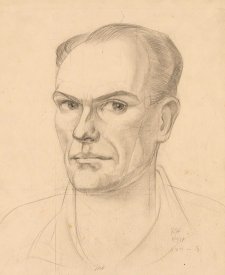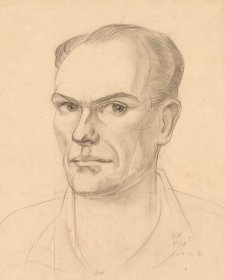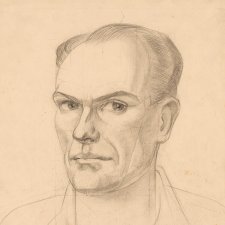Francis Henry Critchley Hinder (1906-1992) was a pioneer of abstract art in Australia. He played an important role as a war artist and was a major influence in the development of modern art in Australia. Born in Sydney, he studied under Dattilo Rubbo at the East Sydney Technical College before pursuing his training abroad. He was one of the first Australian artists to break with tradition by studying in the United States rather than in Britain or France, attending courses in Chicago, from 1927-1928 and New York, 1929 -30. Hinder worked as a commercial artist in the US before returning to Sydney in 1934 as a graphic artist and stage designer. Joined by Ralph Balson, Grace Crowley and Rah Fizelle, he enlivened the local art scene with modernist work based on his experience of cubism. Hinder enlisted in 1939 and, with a number of artists, was assigned as an instructor and research officer in the Camouflage unit of the Royal Australian Engineers. As an alternative to the descriptor 'camoufleurs' for the disparate group of artists designing dummy aircraft and guns, Hinder suggested 'camopansies'. After the war, he taught at East Sydney Technical College eventually becoming the Head of Art at the Sydney Teachers College. Hinder's abstract paintings and electric light sculptures (often made with his partner Margel Hinder) attracted much attention and critical acclaim. In 1952 he won the Blake Prize for Religious Art. He served as a Trustee of the Art Gallery of NSW and was awarded the Australia Medal, General Division, Order of Australia in 1979. Highly respected for his contribution to Australian art, Hinder is represented in the Australian War Memorial, the National Gallery of Australia and all state galleries.
- Plan your Visit
- Full calendar
- Current exhibitions
- Touring exhibitions
- Previous exhibitions
- National Photographic Portrait Prize
- Darling Portrait Prize
- Make a booking
- School visit information
- Current programs
- Virtual excursions
- Learning resources
- Little Darlings
- COVID-19 Safe Plan







